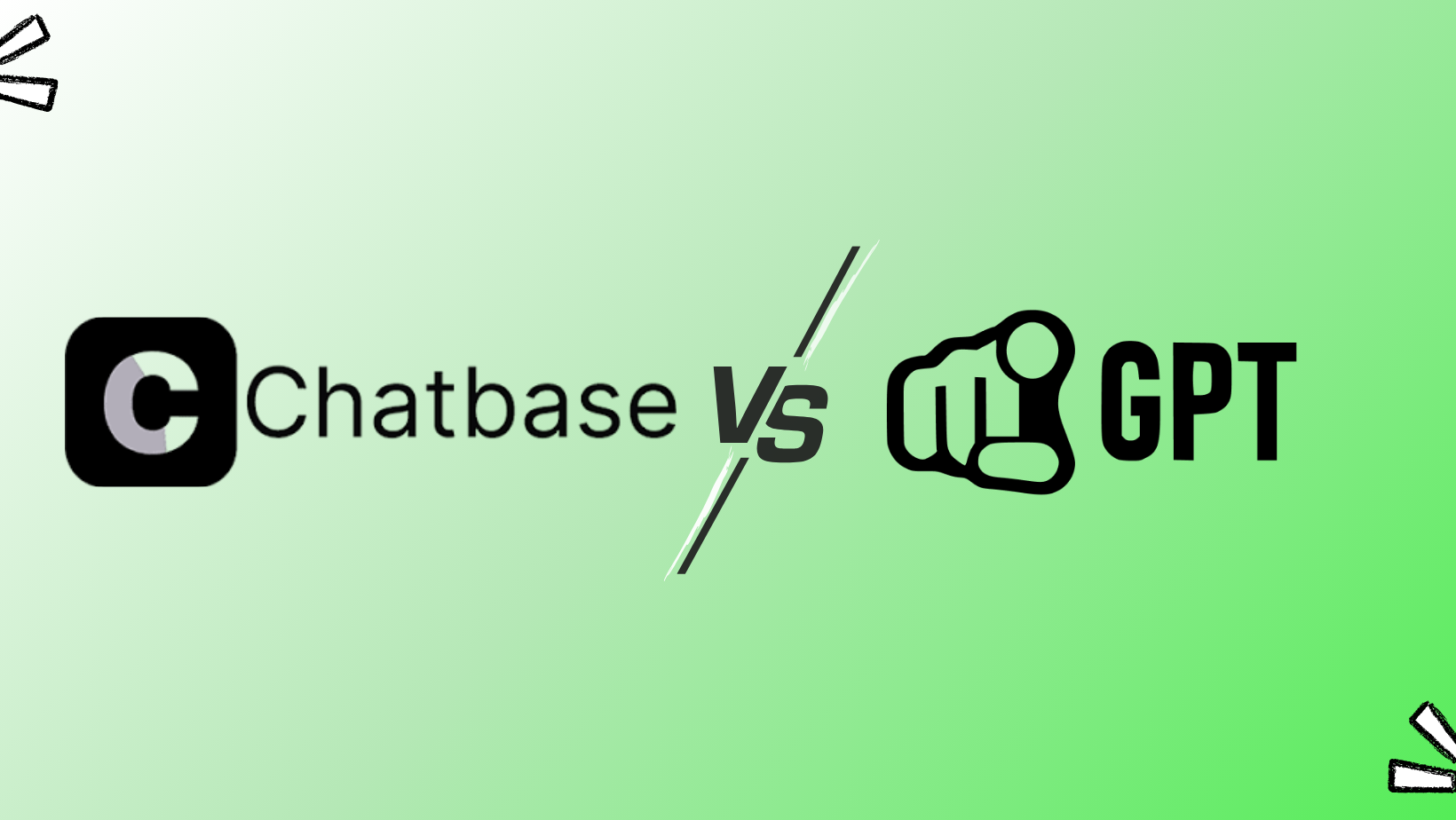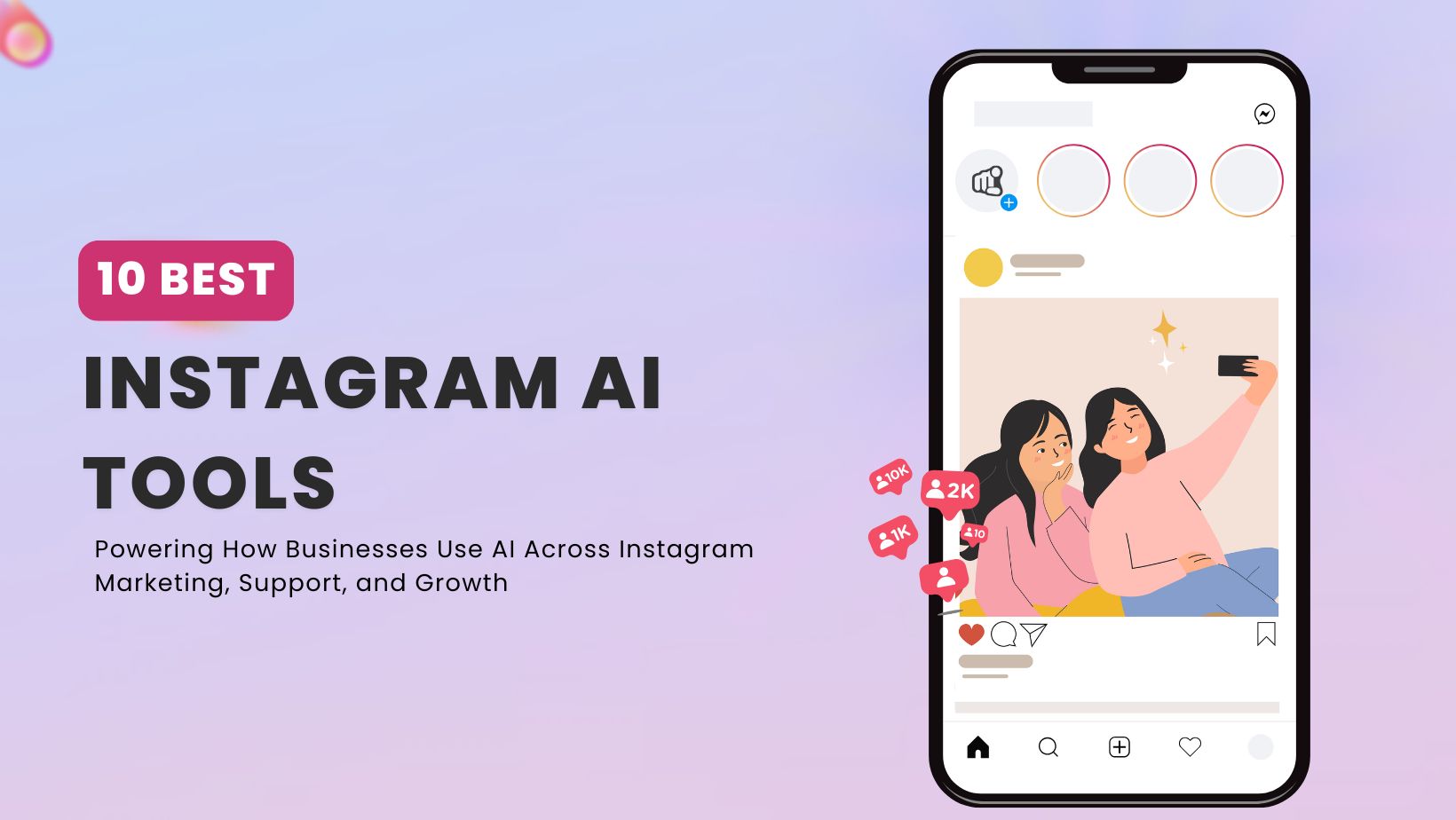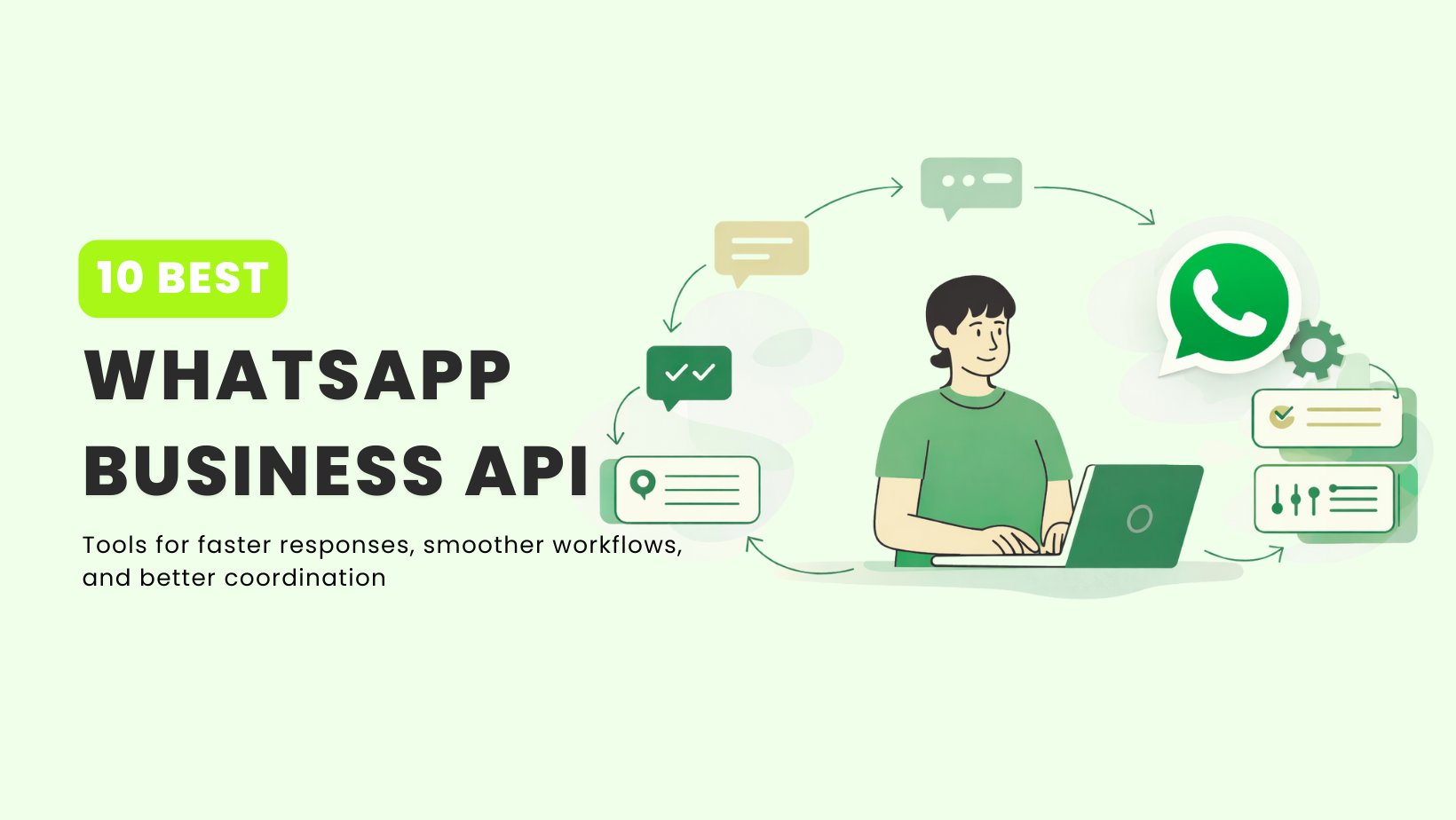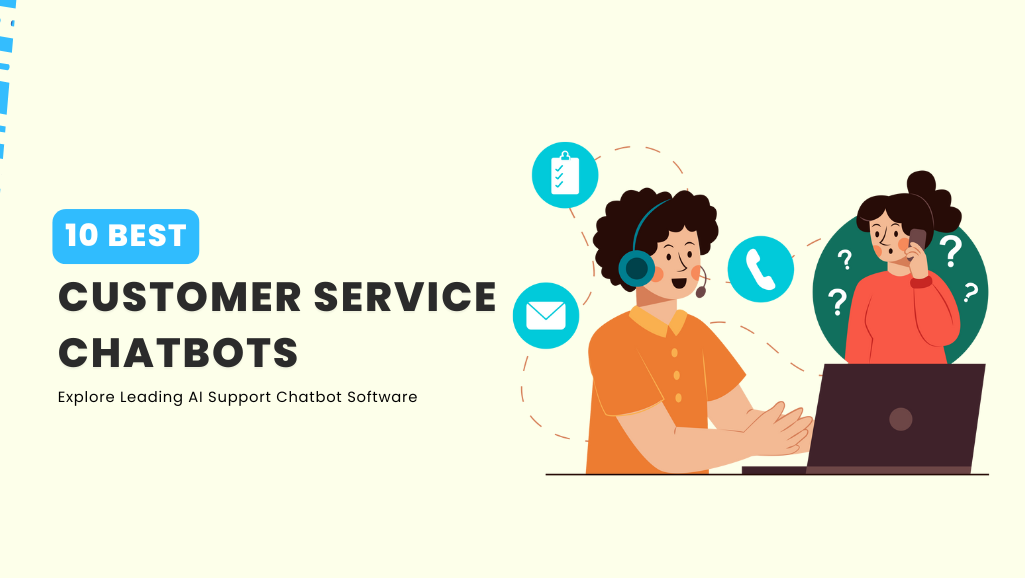YourGPT vs Chatbase: Choosing the Right AI Agent Platform in 2026


Technology choices often have deeper implications than they first appear. Selecting the right AI platform, such as YourGPT or Chatbase, involves more than just checking features and pricing. The true value and potential challenges often emerge once your team begins using the AI agent daily.
Factors like how smoothly an AI agent integrates into your current tools, how easily it scales as your business grows, and how responsive the support team is, genuinely affect productivity. In real-world use, these points can determine whether an AI agent simplifies tasks or becomes a constant source of friction.
In this practical comparison between YourGPT and Chatbase, we share insights into each platform’s actual capabilities, the ease of tailoring it to your business, the tangible value each provides, and how effective their customer support truly is. Our goal is to give you clear, relatable guidance to confidently choose the AI agent solution that best aligns with your business objectives.
When comparing YourGPT vs Chatbase, the difference comes down to what each platform is built for. Both YourGPT and Chatbase allow businesses to build AI Agents, but they were designed with very different goals.
Chatbase is designed for simplicity. It helps teams put a basic RAG agent on their website that can answer common FAQ-style questions using documents or web content. Its value is in being straightforward, easy to set up and easy to run, but it stays within that narrow scope.
YourGPT is an advanced AI platform created for businesses that expect more from automation. It goes beyond giving short answers. YourGPT can reason through requests, follow multi-step processes, and connect actions across business systems. Companies can train it on diverse data sources, and then use it to automate tasks like updating CRM records, routing support tickets, sending follow-up messages, or even handling calls with voice AI. And because it works across websites, messaging apps, email, and phone, it fits naturally into day-to-day operations.
The distinction is clear:
Chatbase was developed to give businesses a straightforward way to launch a chatbot with minimal setup. Its main strength is speed. By uploading documents or linking a website, a chatbot can be created within minutes to handle common questions and provide immediate support to visitors.
This simplicity makes Chatbase a practical option for teams that want a chatbot without investing much time in configuration. It focuses on FAQ-style interactions, helping reduce repetitive queries and providing users with instant responses. For small businesses or projects where the priority is quick deployment, this ease of use is a clear advantage.
Chatbase also allows bots to be embedded directly into websites and connected through integrations such as Zapier. While its ecosystem is more limited compared to broader platforms, it still supports basic connections to tools like Slack, HubSpot, and Shopify. For organizations with straightforward needs, this level of integration can be sufficient.
The trade-off for this simplicity is flexibility. Chatbase is not designed for complex multi-step workflows or deep automation. Its strength lies in being fast, easy to use, and accessible for teams that need a lightweight chatbot solution.
YourGPT is designed for businesses that need more than a basic chatbot. While it can answer questions just like Chatbase, it also supports more advanced use cases. YourGPT can perform multi-step tasks, apply reasoning to requests, and connect actions across different tools. This allows it to contribute to real business processes, not only conversations.
Companies can train YourGPT on a variety of data sources, such as documents, websites, spreadsheets, and knowledge bases. From there, it can automate workflows like updating a CRM record, routing a support ticket, or sending a follow-up email. These actions can be set up through a no-code workflow builder, making them accessible to both technical and non-technical teams.
YourGPT also provides flexibility in how it is deployed. It works across websites, popular messaging apps, email, and even phone calls through voice AI. This makes it suitable for organizations that need to engage customers across multiple channels, not just on a website.
The value of YourGPT comes from its ability to adapt. It is updated regularly and shaped by user feedback, which means the platform grows alongside the businesses that use it. For teams that want an AI solution capable of supporting current needs and expanding with future requirements, YourGPT offers that balance.
| Feature | YourGPT | Chatbase |
|---|---|---|
| AI First | ✅ | ✅ |
| Advanced AI Capabilities | ✅ | Limited to chat |
| Multi-channel Deployment | ✅ | ❌ |
| Integration Ecosystem | Connect to any app | Limited via Zapier |
| Customization & Workflows | Advanced, No-code Builder | Basic FAQ Automation |
| Voice AI Capabilities | ✅ | ❌ |
| Email integration | ✅ | ❌ |
| Mobile App | ✅ | ❌ |
| Data Training Flexibility | Extensive (documents, websites, videos, Confluence) | Limited (documents, websites) |
| Human Escalation | ✅ | ❌ |
| Self-learning Capability | ✅ | ❌ |
| AI Helpdesk Support | ✅ | ❌ |
| Voice AI & Image Understanding | ✅ | ❌ |
| Scalability | Enterprise Ready | Small Scales Business |
When comparing the second-tier plans of both platforms, the value difference becomes clear:
YourGPT not only provides broader functionality but also represents a better financial choice, especially when considering its feature set and future scalability.
YourGPT delivers more capability at a lower cost, giving businesses advanced automation while saving budget. Chatbase ends up costing more while covering fewer use cases.
YourGPT is not a static tool but a growing AI platform shaped by real business needs. Each month brings meaningful updates, from voice AI that handles phone conversations, to multi-modal agents that combine text, voice, and images, to AI helpdesk tools that automate entire support processes. These are not distant promises. They are capabilities that are already becoming part of everyday business use.
We are building to move beyond question answering into real time action-taking that can perform multiple steps. Updating CRM records, routing tickets, processing documents, and linking conversations across email, chat, and phone are examples of how YourGPT supports daily operations. These capabilities show AI moving from simple responses to practical involvement in business workflows.
This approach also focuses on long-term reliability. Security and compliance remain at the core, with SOC 2 Type II and GDPR standards already in place, so enterprises can adopt AI with confidence. At the same time, continuous user feedback ensures the platform imporves in step with what teams actually need.
The future of AI is not about replacing human teams. It is about strengthening them, giving them more time for meaningful work while AI manages repetitive and process-heavy tasks. With YourGPT, businesses gain a partner that adapts alongside them, month after month, preparing them not only for today’s challenges but also for what comes next.
Chatbase is designed for teams that need a fast RAG agent to answer website FAQs. YourGPT offers the same capability but also extends beyond it, with omni-channels, adding voice AI for phone calls, advanced workflows with AI studio, AI helpdesk and much more. If your focus is a simple website chatbot, Chatbase may be enough. If you need one AI platform to handle support, sales, and operations together, YourGPT provides the broader option.
Yes. YourGPT has starter plans for small teams. You can begin with a simple RAG agent then add channels and workflows as you grow.
Chatbase often starts at a lower price for a website RAG agent. YourGPT can reduce total cost over time since chat voice workflows and integrations live in one platform.
Chatbase focuses on website chat. YourGPT offers native options for WhatsApp Messenger Telegram Instagram and more.
Yes. YourGPT supports voice AI for inbound and outbound calls. Chatbase is focused on text RAG agents.
Chatbase can go live in minutes for a website RAG agent. YourGPT takes a bit longer due to workflows channels and integrations yet offers finer control.
YourGPT connects with 500 plus apps such as Salesforce HubSpot Slack and Shopify. Chatbase often uses Zapier or APIs for many links.
YourGPT is SOC 2 Type 2 and GDPR ready with role based access. Chatbase provides standard controls and privacy features. Review plan details for your use case.
Yes. You can import the same sources then add channels workflows and voice. Most teams finish this in a short setup window.
Enterprises tend to pick YourGPT for multi channel automation voice AI advanced workflows and strict controls. Chatbase suits startups and simple pilots that need a fast site RAG agent.
The choice between Chatbase and YourGPT is not about which platform is universally better but about how much you expect AI to do for your business. Chatbase gives you a focused setup for building a RAG agent that answers website FAQs. It is straightforward and works well if your needs stay within that scope.
YourGPT includes those same capabilities but extends them further:
That makes YourGPT an AI platform rather than just another AI agent builder. It can manage support, sales, and operations in one place, while scaling with your business.
For FAQs-only projects, Chatbase is a workable option. For companies building AI into their long-term strategy, YourGPT is the better choice for businesses that need flexibility, scalability, and measurable results.
Chatbase is built for basic website FAQs. YourGPT gives you the power of advanced AI agents that automate workflows, handle voice calls, and scale across all channels.
No credit card required • Full access • Limited time offer

WooCommerce gives store owners flexibility, but that flexibility comes with trade-offs as a store grows. Over time, pages slow down as plugins accumulate, carts get abandoned without obvious reasons, and customer questions start consuming more time than expected. These issues rarely appear all at once, but they compound quickly and directly affect revenue. After working […]

AI customer support tools now form a core part of how many teams handle growing contact volumes and rising customer expectations. At the same time, the market has become crowded, with many similar-looking products and overlapping claims, which makes evaluation harder for support leaders. The AI customer service segment grew from about $12 billion in […]


If you run an Instagram account for business in 2026, you already feel the pressure. The platform has 2 billion monthly users now. About 44% of people on Instagram shop every week, and most expect you to reply to their messages in under an hour. Between creating posts, Stories, and Reels, answering DMs, responding to […]


TL;DR As WhatsApp becomes a core business channel, teams outgrow the basic app and need API-based tools for scale. Platforms such as YourGPT, Respond.io, and Yellow.ai support advanced automation and multi-team workflows, while WATI fits smaller teams needing a simple shared inbox and light automation. WhatsApp has become one of the most important channels for […]


A customer sends an urgent question while your support team is offline. The delayed reply leads to frustration, and a small issue becomes a poor experience. This happens daily for businesses that cannot offer consistent, real-time support. AI chatbots help solve this. They respond instantly, understand context, guide customers through solutions, and transfer complex issues […]


LiveChat is a customer messaging platform that has helped many teams handle customer questions through basic chat widgets, but the way businesses support customers has changed. People now expect quick answers across more channels, and support teams want tools that cut down on repetitive work instead of adding to it. As a result, many companies […]
